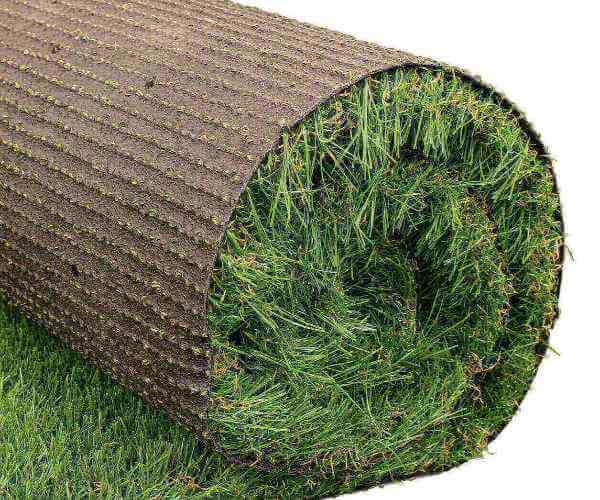- Lawn Turf
- Artificial
- Soil
- Timber
- Composite Decking
- Paving & Stone
Get In Touch With Our Experts Today!
Give us a Call! - Seed & Fertiliser
- Dressing
- Bark

May 19, 2017 Product SpotlightTurf Tips
Turf Wars: Artificial vs. Natural
Whilst we stock various product lines here at GDT, from Millboard decking to topsoil and fertilisers, turf will always remain our flagship item and primary passion. Over the years, we have noticed an increase in demand for artificial turf too, so it’s a really good thing that we sell both! Both types of turf have their own key benefits and drawbacks. It’s difficult to perform a side by side comparison as there are many reasons for using both but nonetheless it’s important to be able to recognise the positives and negatives for both artificial and natural turf so that you can make the right decision when buying. So what are the key strengths and weaknesses of each that you should bear in mind?
The most significant benefit of natural turf is the positive impact that it has on air quality and the environment. Grass is a living organism and as such it photosynthesises, meaning it releasesoxygen into the atmosphere, helping to purify and improve the quality of the air that we breathe – one full size football pitch can offset the carbon footprint of a car travelling 3,000 miles! So, where possible, the use of natural turf can clearly have a really positive impact on the environment. Proving the point that it’s very tough to compare artificial and natural turf, artificial grass on the other handwill require no fertilisers or feeding, which is more environmentally friendly because the runoff is much clearer. You also won’t have to use garden tools such as strimmers and mowers as you would with real grass -both of which have a negative impact on the environment.
Furthermore, real turf will obviouslyalso give you that ‘all natural’ look and feel for your lawn that just isn’t quite reachable when using artificial turf. Whilst high quality artificial turf is soft and comfortable to walk on, many argue that it just doesn’t quite feel the same as natural grass. However, although artificial turf may not feel as good as natural turf, high end artificial grass will easily fool your friends and neighbours in terms of aesthetics – it will look healthy, bright and green all year round (with minimal effort from you!) It’s a case of working out what you’re really looking for from your lawn.
Possibly themost significantbenefit of artificial turf is the maintenance required once it has been laid – or lack thereof! Artificial grass doesn’t require any mowing, trimming or fertilisation, and doesn’t attract unwanted weeds or pests either. It is fairly low maintenance, only really needing to be hosed off from time to time in order to remove any grubbiness that may have built up. We do also recommend that artificial turf is power brushed in order to keep the holes in the base clear and avoid any algae growth or drainage issues. It also means that there is no mud present to be tracked through your nice clean home! Artificial grass will need raking in order to get rid of any leaves, and may need to be swept periodically in order to refresh any patches that have become flattened or matted. This area is probably where natural grass sees its main drawback – as mentioned in previous articles, there are several steps to caring for and maintaining a healthy, good looking lawn that uses natural turf. You have to consider not only the ongoing maintenance, such as mowing and fertilising, but also the intricacies of laying and embedding natural turf; artificial turf can be laid straight away at any time, certainly making it a more convenient and ‘easy’ option.
When trying to decide which type of turf you should be buying, it really all boils down to what you are looking for from your turf, and where you’re going to be laying it. If you’re looking for a minimal maintenance lawn then artificial is almost certainly the right choice for you. It is worth bearing in mind that the preparation required for laying artificial turf is somewhat rigorous (although we supply artificial turf, we don’t currently manage the installation) and we do advise that the correct steps are undertaken in order to achieve the slick lay that you are looking for. However, if you have the time to dedicate to regular maintenance of your lawn in order to keep it in tip top condition, then why not opt for natural turf? You should also bear in mind that there is a price difference between natural and artificial turf – natural turf is generally less expensive – so this is another point to take into consideration. Ultimately it’s about choosing which is right for you and which will meet your specific needs and requirements. As always, our fabulously knowledgeable team are on hand to answer any queries you may have and provide any guidance you may need, so please do get in touch.